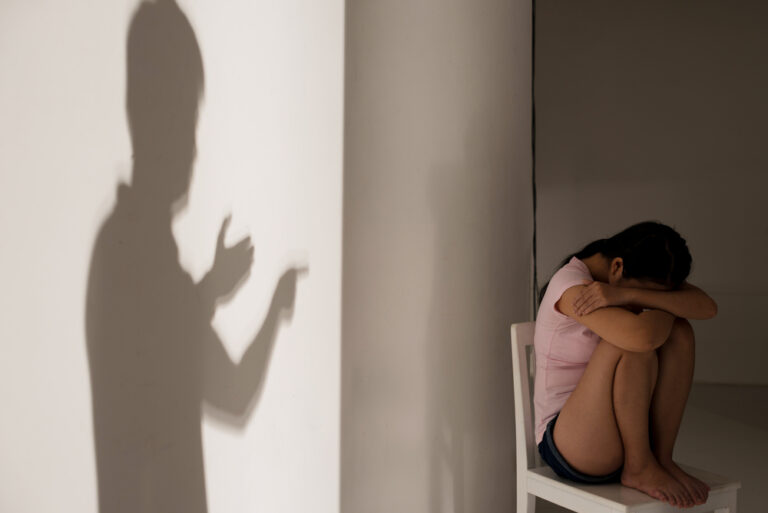Social Anxiety Disorder in Today’s Teenagers
Social Anxiety Disorder (SAD) is a mental illness that is more prevalent than many may think. The condition is also referred to as “social phobia.”
According to the National Institute of Mental Health, SAD affects one-third of teenagers aged 13-18 in the United States alone. This disorder generally appears when the youth is between 10-13 years old.
Fortunately, this SAD condition that exists in teenagers is treatable.
This blog will define Social Anxiety Disorder, provide tell-tale symptoms, possible causes, social media influences on the disorder, family intervention, and therapy options.
Social Anxiety Defined
The Mental Health Foundation states that SAD is a longstanding and excessive fear of social situations.
To open the implications of this definition, we can look to the Mayo Clinic. Everyday social interactions can cause irrational anxiety, fear, self-consciousness, and embarrassment for those who have Social Anxiety Disorder.
Many sufferers most likely realize that their fears are unreasonable. They frequently say no to parties and social gatherings because the psychological and physical symptoms they endure can feel debilitating.
Symptoms of a Socially Anxious Teenager
Symptoms are typically present for about six months before the individual is diagnosed. While many teens feel shy from time to time, SAD teens avoid new experiences and social interactions altogether.
The following psychological and physical symptoms may help identify red flags and the potential need for diagnosis. It is vital to get an early diagnosis, so the teenager’s normal development is not compromised.
Psychological symptoms include embarrassment, difficulty talking to new people, fear of being judged by others, trouble with eye contact. These symptoms are often a natural progression towards or hand-in-hand with physical symptoms.
Physical symptoms can include racing heartbeat, blushing, sweating, shortness of breath, upset stomach, dizziness, and trembling.
Equally as important in identifying the symptoms of Social Anxiety Disorder is understanding what causes the condition.
What Causes Social Anxiety
Several factors contribute to an onset of social anxiety, and they primarily fall along the lines of genetics and environment.
Interestingly, the Amygdala regulates fear responses in the brain. Studies have shown that some people with SAD have an overactive Amygdala. This will cause an elevation in their social fear response.
Parents who are over-protective and smothering can cause anxiety in young children, leading to SAD.
Anxiety may also run in families, although this is difficult to actuate due to the disorder’s heavy influence on learned behavior. For example, parents may have difficulty navigating an embarrassing situation and become overly anxious, and they can pass on this behavior to their children who witness their response.
Trauma can also play a role, particularly with sexual or emotional abuse.
In the day and age of online socialization, let’s look at how social media may have a root in causing SAD in some kids.
Social Media Implications on Social Anxiety
To illustrate how social media can affect SAD youth, in a recent 2020 study reported on The Boys and Girls Club website, 22 million teenagers login to Instagram every day. Anxiety-ridden youth, especially females, find their anxiety heightens as they look at what appears to be pressure to look perfect!
Unfortunately, it’s a double-edged sword because teenagers feel they need to stay on top of what is current, so not “logging on” to participate in social media conversation becomes another kind of stress.
The “Confidence Kit” is a valuable tool for parents and caregivers. It is a PDF download that offers professional advice on how to help youth with self-esteem and body confidence as it relates to online media platforms.
What Can Family Members Do to Help
This disorder is challenging for parents because parents want their children to be confident and self-assured, not withdrawn and anxious. Parents need to realize that SAD is a condition that teenagers have problems understanding why they behave this way.
Racing thoughts lead to a rapid pulse and fast breathing. Parents and family members can encourage their teenagers to take deep breaths and calm down. The increased oxygen from deep breathing can help reduce tight muscles, but most importantly, this empowers the adolescent to realize that they have ready tools to try and relax by taking a nice, long deep breath to regroup.
Kids with SAD often feel that they need to behave and look perfect to fit in with others; this creates stress, leading to anxiety. One way that caregivers can help with this is to sit down with the teenager and assure them that not everything or everyone is perfect!
Available Treatment Options
Again, there is reason to be very optimistic in treating Social Anxiety Disorder.
Effective treatments are psychotherapy, medication, and alternative medicine, depending on the severity.
Also, caregivers can encourage the affected teenager to take small steps, like a day-to-day strategy, and caregivers can do this along with them:
• Eat with a close relative in a public setting
• Make eye contact with a stranger
• Give someone a compliment
• Ask a retail clerk to find an item
• Get directions from a stranger
• Call a friend
Another good idea is for the teenager to join a support group. Often, there are groups available online if the teenager is not quite ready to go to something in person. It would be an excellent way to work up to a large group gathering while still getting feelings out in the open.
While many obstacles in schools, social media, and home life can exasperate Social Anxiety Disorder, there are many ways to develop tools, therapy, and small steps to march into adulthood with positive strides.








